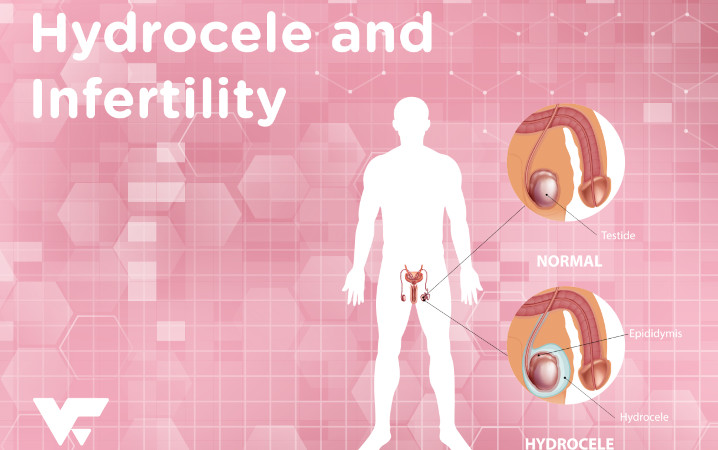- No Comments
Hydrocele and Infertility
Oftentimes, when people hear about a medical term, it leads to anxiety and some start assuming it has to do with their current health challenge. But this is usually not the case. In this article, you will learn about hydrocele and your fertility.
Questions to answer include:
- What is a hydrocele?
- What are the symptoms of a hydrocele?
- What are the causes of a hydrocele?
- Can hydrocele cause infertility?
- Can I know the risk factors and?
- When do I need to see my doctor?
- What should I expect during diagnosis?
What is a hydrocele?
A hydrocele is a type of swelling in the scrotum that occurs when fluid gathers in the thin sheath surrounding a testicle. It usually occur in newborns and disappears without treatment by age 1. While in some cases, it also occurs in older boys and adult men but usually from an inflammation or injury within the scrotum. It occurs only in males.
What are the symptoms of hydrocele?
Typically, the only indication of a hydrocele is that you will notice a painless swelling of one or both testicles. Adult men with a hydrocele might experience uneasiness from the heaviness of a swollen scrotum. The pain generally increases with the size of the inflammation. Sometimes, the swollen area might be smaller in the morning and larger later in the day.
What are the causes of hydrocele?
In baby boys, a hydrocele can develop before birth. The testicles would normally descend from the developing baby’s abdominal cavity into the scrotum. A sac accompanies each testicle, allowing fluid to surround the testicles. Usually, each sac closes and the fluid is absorbed.
Sometimes, the fluid remains after the sac closes (no communicating hydrocele). The fluid is usually absorbed gradually within the first year of life. But in some cases, the sac remains open (communicating hydrocele). The sac can change size or if the scrotal sac is compressed, fluid can flow back into the abdomen. Communicating hydroceles are often associated with inguinal hernia.
In older males, a hydrocele can develop as a result of injury or inflammation within the scrotum. Swelling might be caused by an infection in the testicle or in the small, coiled tube at the back of each testicle (epididymitis).
Can I know the risk factors?
Most hydroceles are present at birth. At least 5 percent of newborn boys have a hydrocele. Babies who are born prematurely have a higher risk of having a hydrocele.
Risk factors for developing a hydrocele later in life include:
- Injury or inflammation (swelling) to the scrotum
- Infection, including a sexually transmitted infection (STI)
Can hydrocele cause infertility?
A hydrocele typically isn’t dangerous and usually doesn’t affect fertility. But a hydrocele might be associated with an underlying testicular condition that can cause serious complications, including:
- Infection or tumor which might reduce sperm production or function.
- Inguinal hernia which might cause the loop of intestine to be trapped in the abdominal wall and can lead to life-threatening complications.
When do I need to see my doctor?
In most cases, a hydrocele is not painful or harmful and might not need any treatment. But if you have scrotal swelling, it is advisable to see your doctor to confirm other causes.
See your doctor if you or your child experiences scrotal swelling in order to check for other causes of the swelling such as inguinal hernia. A baby’s hydrocele typically disappears on its own. But if your baby’s hydrocele doesn’t disappear after a year or if it enlarges, ask your child’s doctor to examine the hydrocele again.
You also need to get immediate medical treatment if you or your child develops sudden, severe scrotal pain or swelling, especially within several hours of an injury to the scrotum. This might be a symptom of other conditions such as blocked blood flow in a twisted testicle (testicular torsion) which must be treated within hours of the beginning of signs and symptoms to save the testicle.
What should I expect during diagnosis?
Your doctor will start with a physical exam. It’s likely to include:
- Checking for tenderness in an enlarged scrotum.
- Applying pressure to the abdomen and scrotum to check for inguinal hernia.
- Shining a light through the scrotum (Trans illumination). If you or your child has a hydrocele, Trans illumination will show clear fluid surrounding the testicle.
After that, your doctor might recommend:
- Blood and urine tests to help determine if you or your child has an infection, such as epididymitis
- Ultrasound to help rule out hernia, testicular tumor or other causes of scrotal swelling
Conclusively, if you are a sexually active adult, avoid sexual contact that could put your partner at risk of contracting an STI, including sexual intercourse, oral sex and any skin-to-skin genital contact.
Source: Mayo Clinic
For further questions and inquiries, please send us a DM or visit our website to book a consultation with our specialists on your fertility journey. You can also send a mail to ask@wellfert.com.
Do not forget to also follow our social media pages @wellfert on Facebook, Instagram, Twitter, and LinkedIn.
You can also join our Wellfert community on Facebook where you can contribute while others learn from your experiences and vice versa at Fertility conversations with Wellfert.


Leave A Comment